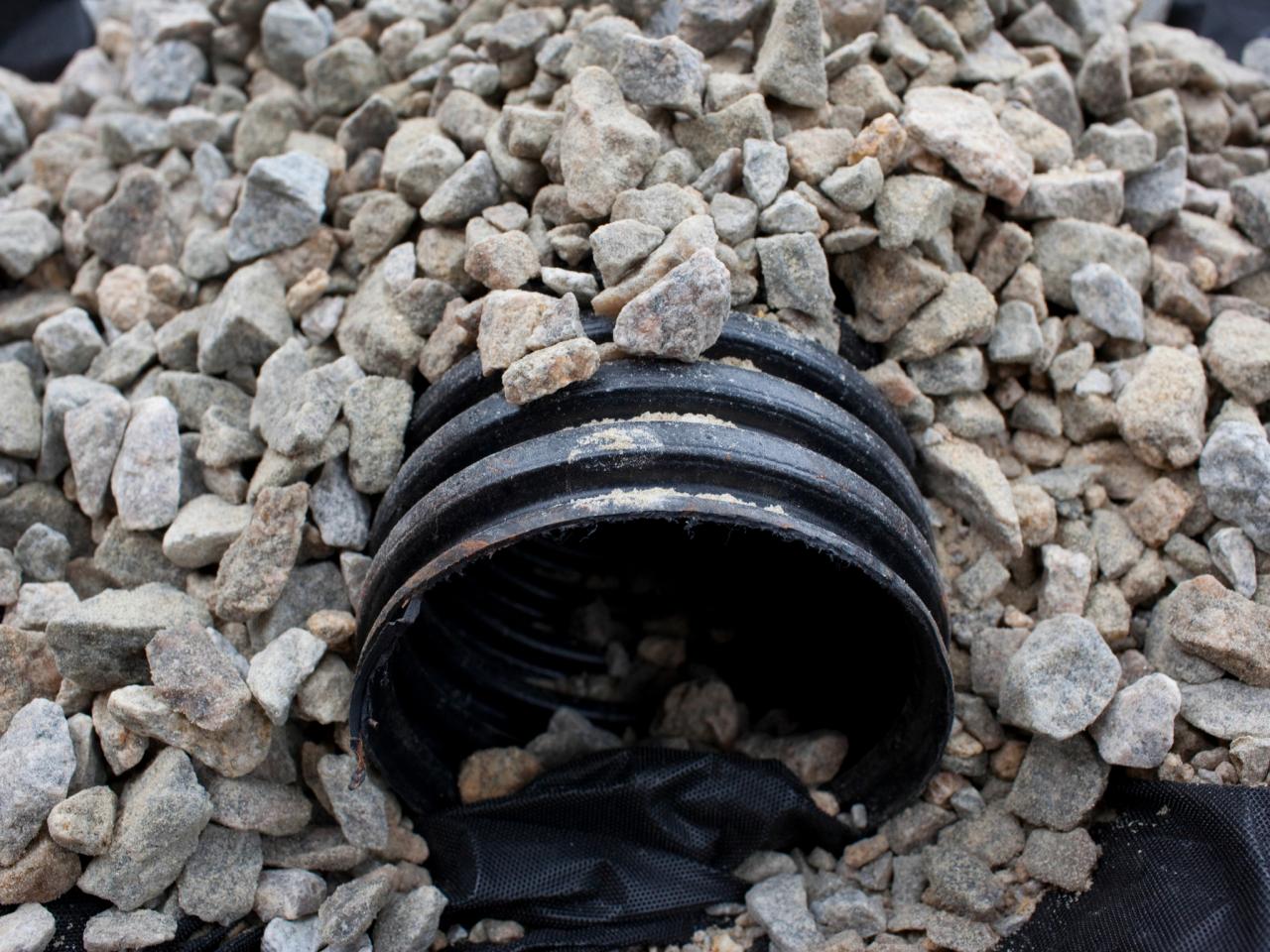Home>diy>Building & Construction>What Is Retainage On A Construction Project


Building & Construction
What Is Retainage On A Construction Project
Modified: December 7, 2023
Learn everything about retainage in the building construction industry. Understand how it affects projects, payments, and contract terms.
(Many of the links in this article redirect to a specific reviewed product. Your purchase of these products through affiliate links helps to generate commission for Storables.com, at no extra cost. Learn more)
Introduction
Welcome to the world of construction projects, where every detail matters. One crucial aspect of any construction project is retainage, a term that is often misunderstood or overlooked. In this article, we will delve into the world of retainage and shed light on its importance in the construction industry.
In the construction industry, retainage refers to the practice of withholding a percentage of the payment due to a contractor or subcontractor until the completion of the project. It serves as a form of security for the project owner, ensuring that the contracted work is completed satisfactorily and within the agreed-upon terms.
The concept of retainage is prevalent in various construction projects, including commercial buildings, residential complexes, infrastructure development, and renovations. It acts as a financial safeguard for project owners, minimizing the risk of incomplete or subpar work by providing an incentive for contractors and subcontractors to fulfill their contractual obligations.
The primary purpose of retainage is to protect the project owner’s interests. By withholding a portion of the payment, the owner has leverage to encourage timely completion, adherence to specifications, and resolution of any defects or deficiencies that may arise during the construction process.
The retainage percentage is typically agreed upon during the contract negotiation phase. Common industry standards range from 5% to 10%, although this can vary depending on the specific project and contractual agreements. The percentage is calculated based on the total contract value, and the retained amount is held in an escrow or trust account until the project reaches substantial completion.
Now that we understand the purpose and percentage of retainage, let’s dive into how it is calculated.
Key Takeaways:
- Retainage in construction projects provides financial security for owners and incentivizes quality work from contractors, but requires careful planning and communication to navigate its impact on cash flow and relationships.
- Understanding legal considerations, managing cash flow, and prioritizing quality work are essential strategies for effectively navigating the complexities of retainage in construction projects.
Read more: What Is Construction Retainage
Definition of Retainage
Retainage, also known as “retention,” is a common practice in the construction industry that involves withholding a portion of the contract payment until the completion of the project. It serves as a form of security for the project owner, ensuring that the contracted work is performed satisfactorily and all contractual obligations are met.
Retainage is typically expressed as a percentage of the total contract value. This percentage is agreed upon between the project owner and the contractor or subcontractor during the contract negotiation phase. The retained amount is deducted from each progress payment and held in an escrow or trust account until the project reaches substantial completion.
The purpose of retainage is to protect the project owner’s interests by giving them leverage and financial recourse in case of issues such as delays, defects, or non-compliance with specifications. It encourages contractors and subcontractors to fulfill their contractual obligations, complete the work on time, and ensure quality performance.
Retainage plays an essential role in promoting accountability and maintaining control over the project. By withholding a portion of the payment, the owner has an incentive for the contractor or subcontractor to rectify any deficiencies, complete the work to specifications, and ensure compliance with applicable laws and regulations.
While retainage provides a layer of protection for the owner, it can have financial implications for contractors and subcontractors. The withheld funds can affect their cash flow, making it important for them to carefully manage their resources during the duration of the project.
It’s important to note that retainage is distinct from other forms of construction payments, such as progress payments or final payments. Retainage is specifically designed to provide security and leverage to the project owner, ensuring the successful completion of the project and adherence to contractual obligations.
Now that we have defined retainage and its purpose, let’s explore how the retainage percentage is determined.
Purpose of Retainage in Construction Projects
Retainage serves a crucial role in construction projects, benefiting both project owners and contractors. Its primary purposes can be summarized as follows:
- Ensuring Completion: Retainage provides project owners with an incentive to ensure that contractors and subcontractors fulfill their contractual obligations and complete the project as agreed upon. By withholding a portion of the payment, owners have leverage to encourage timely and satisfactory project completion.
- Quality Control: Retainage promotes quality control by holding back a percentage of payment until the project reaches substantial completion. This motivates contractors and subcontractors to meet the specified requirements, adhere to industry standards, and deliver work of the desired quality. It encourages them to rectify any defects or deficiencies and ensure that the project meets the required standards.
- Risk Mitigation: Retainage mitigates the risk for project owners by providing financial security. By withholding a portion of payment, owners can safeguard themselves against potential default, delays, or non-compliance. In case of any issues during the construction process, owners can use the retained funds to rectify the problems or hire alternative contractors to complete the work.
- Contractual Compliance: Retainage promotes adherence to contractual agreements, specifications, and project milestones. Contractors and subcontractors have a vested interest in meeting the requirements and timelines set forth in the contract to receive the full payment, including the retained amount upon project completion. This ensures that all parties involved are accountable and committed to fulfilling their obligations.
- Resolution of Disputes: Retainage provides project owners with leverage in resolving disputes related to work quality, contractual compliance, or any other issues that may arise during the construction process. The retained funds can act as a financial buffer to address disagreements, incentivizing parties to find resolutions and avoid costly litigation.
- Project Protection: Retainage safeguards the project owner’s interest by providing a financial safeguard against potential risks and uncertainties. It ensures that funds are available to cover unforeseen expenses, change orders, or any additional work required to complete the project successfully.
Overall, retainage plays a vital role in construction projects, offering project owners financial security, incentivizing timely and quality completion, promoting adherence to contractual obligations, and protecting against potential risks. Contractors and subcontractors, on the other hand, are encouraged to meet specifications, deliver work of the desired quality, and fulfill their contractual obligations to receive the full payment, including the retained amount upon project completion.
Now that we understand the purpose of retainage, let’s move on to explore how the retainage percentage is determined in construction projects.
Retainage Percentage
The retainage percentage is a key factor in determining the amount that will be withheld from each progress payment in a construction project. While there is no fixed industry standard, the retainage percentage is typically negotiated and agreed upon during the contract negotiation phase between the project owner and the contractor or subcontractor.
The percentage of retainage can vary based on various factors, including the nature of the project, the scope of work, the level of risk involved, and the prevailing practices in the specific industry or region. Common industry standards for retainage percentages typically range from 5% to 10%. However, it is essential to note that these percentages can be lower or higher, depending on the specific project and contractual agreements.
Project owners often strive to strike a balance between protecting their interests and maintaining good relationships with contractors and subcontractors. While a higher retainage percentage provides more security for owners, it can adversely impact contractors’ cash flow and may result in higher project costs due to increased bonding or financing requirements.
On the other hand, a lower retainage percentage may be more favorable for contractors as it enables them to access more of their earned funds during the course of the project. However, project owners may perceive this as a higher risk, potentially leading to disputes and disagreements if issues arise during construction.
It is crucial for project owners and contractors to carefully consider the retainage percentage and come to a mutual agreement that aligns with their respective interests. Negotiating a fair and reasonable retainage percentage can help maintain a positive working relationship while ensuring appropriate security measures are in place.
Once the retainage percentage has been established, it is important to accurately calculate the retained amount at each progress payment stage. This process involves deducting the agreed-upon percentage from the total payment amount. The withheld funds are then held in an escrow or trust account until the project reaches substantial completion, at which point they are typically released to the contractor or subcontractor.
Now that we understand how the retainage percentage is determined, let’s explore the calculation process in more detail.
How Retainage is Calculated
The calculation of retainage in construction projects involves determining the amount to be withheld from each progress payment based on the agreed-upon retainage percentage. The process can be summarized in the following steps:
- Establish the Retainage Percentage: During the contract negotiation phase, the project owner and contractor or subcontractor agree on the retainage percentage. This percentage is often set between 5% to 10%, but it can vary based on the specific project and contractual agreements.
- Calculate the Total Payment Due: To calculate the retainage amount, you first need to determine the total payment due to the contractor or subcontractor for the specific progress period. This total payment includes the amount for completed work, materials supplied, and any allowable change orders or approved extras.
- Deduct the Retainage Amount: Once the total payment due has been determined, you deduct the retainage percentage from this amount. For example, if the retainage percentage is 5% and the total payment due is $10,000, the retainage amount would be $500 (5% of $10,000).
- Hold the Retained Amount: The deducted retainage amount is then set aside and held in an escrow or trust account until the project reaches substantial completion. This amount serves as security for the project owner and is intended to incentivize the contractor or subcontractor to fulfill their contractual obligations.
- Repeat the Calculation for Each Progress Payment: The calculation process is repeated for each progress payment throughout the duration of the project. The retainage amount is deducted from the total payment due, and the retained funds are accumulated and held until the project reaches substantial completion.
- Release the Retained Amount: Once the project reaches substantial completion, and all contractual obligations have been fulfilled, the retained amount is typically released to the contractor or subcontractor. This release is subject to any remaining work, inspection and acceptance by the owner, and resolution of any outstanding issues or defects.
It is important to accurately calculate the retainage amount at each progress payment stage to ensure transparency and fairness. This involves applying the agreed-upon retainage percentage to the total payment due and deducting the retainage amount accordingly.
Managing the retained funds effectively involves proper documentation, tracking, and accounting to ensure the funds are properly held and released in accordance with the contract terms and project milestones.
Now that we understand how retainage is calculated, let’s move on to the retainage release process.
Retainage on a construction project is a percentage of each payment withheld until the project is complete. It serves as a form of security for the project owner to ensure that the contractor completes the work satisfactorily.
Read more: What Is Retainage In A Construction Loan
Retainage Release Process
The retainage release process refers to the steps involved in releasing the retained funds to the contractor or subcontractor upon the project reaching substantial completion. While the specific process may vary depending on the project and contractual agreements, the general steps can be outlined as follows:
- Final Inspection and Punch List: Before initiating the retainage release process, the project owner typically conducts a final inspection of the completed work. This inspection aims to identify any remaining defects or deficiencies that need to be rectified before the project can be considered substantially complete. A punch list may be generated, listing the remaining tasks to be completed by the contractor or subcontractor.
- Completion of Punch List Items: The contractor or subcontractor addresses the items on the punch list, completing any outstanding work or rectifying any identified deficiencies. The owner may conduct a follow-up inspection to verify that all items have been satisfactorily completed.
- Submission of Final Documentation: The contractor or subcontractor prepares and submits final documentation, including any required closeout documents, warranties, as-built drawings, and other project-specific documentation. This documentation helps verify that all contractual obligations have been fulfilled and facilitates a smooth retainage release process.
- Retention Reduction: Upon verifying that all punch list items have been completed and final documentation has been submitted, the project owner may initiate a retention reduction process. This involves reducing the amount of retained funds by an agreed-upon percentage, typically 50%. The reduced amount is then released to the contractor or subcontractor as a form of partial payment before the project’s final completion.
- Final Completion and Release: Once all remaining work has been completed, and the project is deemed fully complete, the final retainage release process is initiated. This typically involves a final inspection by the owner to ensure that all contract requirements have been met and that the work is in compliance with the agreed-upon terms. Upon successful completion of the inspection, the remaining retained funds are released to the contractor or subcontractor.
- Contractual Obligations and Disputes: The retainage release process is subject to the satisfactory fulfillment of all contractual obligations. In case of any outstanding disputes or unresolved issues, the release of retained funds may be delayed until those matters are resolved. This ensures that the released funds are appropriate and fair for the completed work.
It is important for both project owners and contractors to have a clear understanding of the retainage release process as outlined in the contract. This ensures that all parties are aware of the requirements and expectations regarding the completion of work, submission of final documentation, and the conditions for retainage release.
By following these steps and adhering to the contractual obligations, the retainage release process can be smooth and mutually beneficial for all parties involved.
Now that we understand the retainage release process, let’s examine the impact of retainage on contractors and subcontractors in construction projects.
Impact of Retainage on Contractors and Subcontractors
Retainage can have both positive and negative impacts on contractors and subcontractors in construction projects. Understanding these impacts is crucial for effective cash flow management and successful project completion. Let’s explore the key aspects:
1. Cash Flow: Retainage can significantly affect the cash flow of contractors and subcontractors. Since a portion of the payment is withheld until project completion, it can create financial challenges, especially for smaller firms or those with limited resources. Contractors and subcontractors need to carefully plan their finances to account for the retained funds and ensure ample cash flow for ongoing project expenses.
2. Increased Costs: Retainage requirements can lead to additional costs for contractors and subcontractors. Higher retainage percentages may necessitate increased bonding or financing expenses to secure the project. Additionally, the need to manage cash flow during the project’s duration might require additional resources, such as securing financing or extending credit terms with suppliers.
3. Incentive for Quality Work: While retainage can create financial challenges, it serves as an incentive for contractors and subcontractors to deliver high-quality work. The retained funds act as leverage, motivating them to fulfill their contractual obligations, meet project specifications, and rectify any deficiencies or defects promptly. Contractors and subcontractors who prioritize quality performance can benefit from a positive reputation and increased opportunities for future projects.
4. Relationship Dynamics: The presence of retainage can sometimes strain the relationship between project owners, contractors, and subcontractors. Disputes or delays in retainage release can lead to tensions between parties, affecting collaboration and future business prospects. Effective communication and transparency are essential in maintaining positive relationships throughout the project duration.
5. Secured Project Completion: Retainage provides project owners with a form of security against potential risks and non-compliance. It ensures that contractors and subcontractors remain committed to meeting their obligations and completing the project satisfactorily. By withholding a portion of the payment, owners have recourse to rectify any deficiencies or engage alternative contractors if necessary, reducing the overall project risk.
6. Managing Resources: Contractors and subcontractors must effectively manage their resources to accommodate the impact of retainage. This includes carefully monitoring project expenses, maintaining adequate cash flow, and implementing cost control measures. Efficient project management that considers the retained funds can help mitigate the financial impact on the business.
While retainage can present challenges, contractors and subcontractors can navigate its impact by adopting proactive financial planning, maintaining open communication with project owners, and consistently delivering quality work. Establishing positive relationships and a track record of on-time, satisfactory completion can lead to reduced retainage requirements and improved business opportunities in the long run.
Now that we have explored the impact of retainage, let’s look into strategies for managing retainage effectively.
Strategies to Manage Retainage Effectively
Effectively managing retainage is crucial for contractors and subcontractors to navigate the financial impact and ensure successful project completion. Here are some strategies to consider:
1. Cash Flow Planning: Contractors and subcontractors should develop a comprehensive cash flow plan that takes into account the impact of retainage. This plan should include forecasting the retained amount for each progress payment and identifying strategies to maintain adequate cash flow throughout the project duration. It may involve securing additional financing, negotiating favorable credit terms with suppliers, or closely monitoring project expenses to ensure they align with available funds.
2. Accurate Documentation: Maintaining accurate and detailed documentation is essential for managing retainage effectively. Contractors and subcontractors should maintain records of work completed, materials supplied, and any approved change orders or extras. Proper documentation facilitates the justification of retainage release and helps avoid disputes or delays in payment.
3. Timely Communication: Open and proactive communication with the project owner is key to managing retainage effectively. Contractors and subcontractors should keep the owner informed of project progress, milestones achieved, and any obstacles encountered. This can help build trust and facilitate a smoother retainage release process.
4. Quality Assurance and Deficiency Resolution: Contractors and subcontractors should prioritize quality workmanship and promptly address any deficiencies or defects identified during inspections. By ensuring that the work meets specifications and industry standards, they can enhance the chances of a successful and timely retainage release.
5. Negotiate Reasonable Retainage Terms: During contract negotiations, it is crucial to advocate for reasonable retainage terms. Contractors and subcontractors can propose lower retainage percentages or suggest alternative forms of security, such as performance or payment bonds. This helps minimize the financial impact on their cash flow while still providing the project owner with adequate assurance.
6. Subcontractor Management: Contractors should have a proactive subcontractor management system in place to ensure that their subcontractors also understand and adhere to the retainage requirements. Regular communication and coordination with subcontractors can help align efforts and maintain project progress, reducing the potential for delays or disputes that may affect the retainage release process.
7. Track Retainage Requirements: Contractors and subcontractors should stay organized and maintain a clear record of the retainage requirements and progress payments. This helps ensure accurate calculations and timely payments, reducing the risk of errors or misunderstandings that could lead to delays in the retainage release.
8. Maintain Professionalism: It is essential to maintain a professional approach and positive working relationships with project owners and other stakeholders. Handling disagreements or disputes constructively can help navigate the retainage release process more smoothly and preserve future business opportunities.
Implementing these strategies can help contractors and subcontractors manage retainage effectively, optimize cash flow, and ensure successful project completion. By adopting a proactive approach and maintaining clear communication and documentation, the impact of retainage can be mitigated, allowing for smoother operations and improved financial outcomes.
Now, let’s move on to discuss some legal considerations surrounding retainage in construction projects.
Legal Considerations for Retainage
Retainage in construction projects involves several legal considerations that both project owners and contractors should be aware of. These considerations help ensure compliance with laws and regulations and establish a fair and transparent retainage process. Here are some key legal aspects to keep in mind:
- Contractual Agreements: Retainage terms should be clearly outlined in the contract between the project owner and the contractor or subcontractor. The contract should specify the retainage percentage, basis for calculation, retainage release process, and any predefined milestones or conditions for retainage reduction or release.
- Lien Laws: Contractors and subcontractors should be familiar with the lien laws in their jurisdiction. These laws govern the rights and remedies available to parties in cases of non-payment or disputes. Some jurisdictions have specific regulations regarding retainage, including limitations on the retainage percentage and timelines for retainage release.
- Notice Requirements: Depending on the jurisdiction, there may be specific notice requirements related to retainage. Contractors and subcontractors may be required to provide written notice to the project owner regarding the calculation and amount of retainage, as well as any changes or adjustments to the retainage amount throughout the project.
- Substantial Completion: The concept of substantial completion is crucial in determining when retainage can be released. It is important to clearly define substantial completion in the contract and include the criteria or parameters for the determination of substantial completion. This ensures that both parties have a common understanding of when the retainage release process can commence.
- Dispute Resolution: It is prudent to include provisions for dispute resolution in the contract in case conflicts or disagreements arise during the retainage release process. These provisions may include arbitration or mediation clauses to provide an alternative mechanism for resolving disputes outside of formal litigation.
- Contract Compliance: Both project owners and contractors have a responsibility to comply with the terms of the contract, including the retainage provisions. Failure to fulfill contractual obligations related to retainage may result in legal consequences, such as breach of contract claims or the loss of rights to retainage amounts.
- State-specific Regulations: It is essential to research and understand the specific regulations and requirements related to retainage in the state where the construction project is taking place. Each state may have distinct laws governing retainage amounts, retainage release timelines, and other aspects that contractors and project owners must adhere to.
Engaging legal counsel or consulting with construction industry professionals knowledgeable in retainage laws and practices can provide valuable guidance and ensure compliance with all relevant legal considerations. By adhering to these legal considerations, project owners and contractors can establish a solid foundation for a transparent retainage process, minimizing the risk of legal disputes or complications.
Now that we have explored the legal considerations, let’s conclude our discussion on retainage in construction projects.
Read more: What DIY Projects For A Glue Gun
Conclusion
Retainage is a critical aspect of construction projects that serves to protect the interests of project owners while incentivizing contractors and subcontractors to fulfill their contractual obligations. By withholding a percentage of payment until project completion, retainage provides financial security for owners and encourages quality workmanship.
Throughout this article, we have explored the definition of retainage, its purpose in construction projects, how the retainage percentage is determined, and the calculation process. We have also discussed the retainage release process, its impact on contractors and subcontractors, strategies for managing retainage effectively, and the legal considerations surrounding retainage.
Retainage management requires careful financial planning, accurate documentation, timely communication, and adherence to contractual obligations. Contractors and subcontractors must navigate its impact on cash flow, strive for quality workmanship, and maintain professionalism in resolution of disputes.
Project owners, on the other hand, must ensure fair and transparent retainage terms in contracts, comply with state-specific regulations, and communicate effectively with contractors and subcontractors throughout the project duration.
By understanding and implementing the strategies outlined in this article, construction industry stakeholders can navigate the complexities of retainage effectively, minimize financial challenges, and foster positive working relationships. This, in turn, can lead to successful project completion, improved reputation, and increased opportunities for future projects.
In conclusion, retainage serves as a valuable tool in construction projects, balancing the interests of both project owners and contractors. When managed appropriately, retainage can provide the necessary security and accountability to ensure project success and maintain the integrity of the construction industry as a whole.
Remember, each construction project may have unique considerations and requirements when it comes to retainage. It is essential to consult with legal counsel and industry professionals to ensure compliance with applicable laws and regulations and to tailor retainage practices to the specific needs of each project.
Frequently Asked Questions about What Is Retainage On A Construction Project
Was this page helpful?
At Storables.com, we guarantee accurate and reliable information. Our content, validated by Expert Board Contributors, is crafted following stringent Editorial Policies. We're committed to providing you with well-researched, expert-backed insights for all your informational needs.














0 thoughts on “What Is Retainage On A Construction Project”